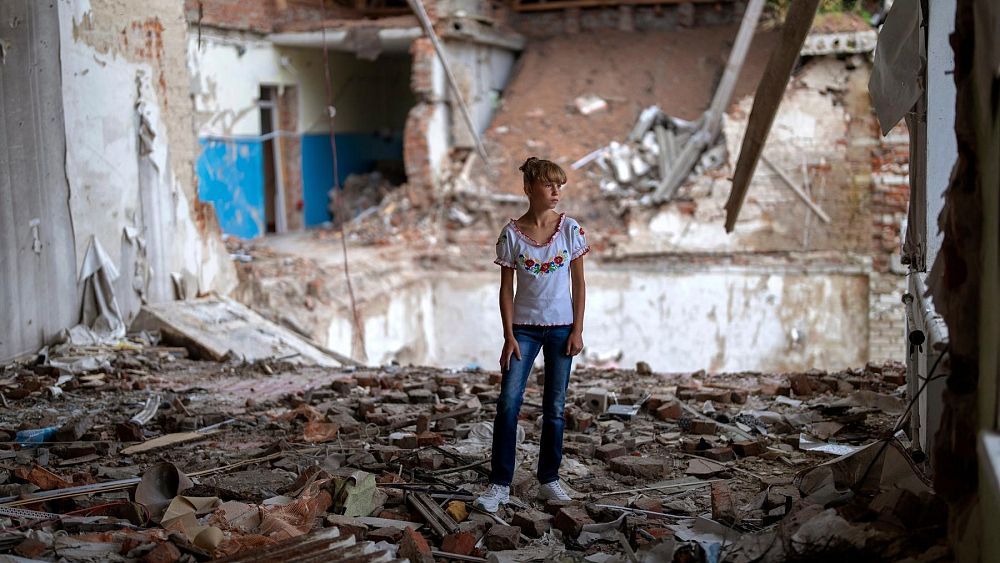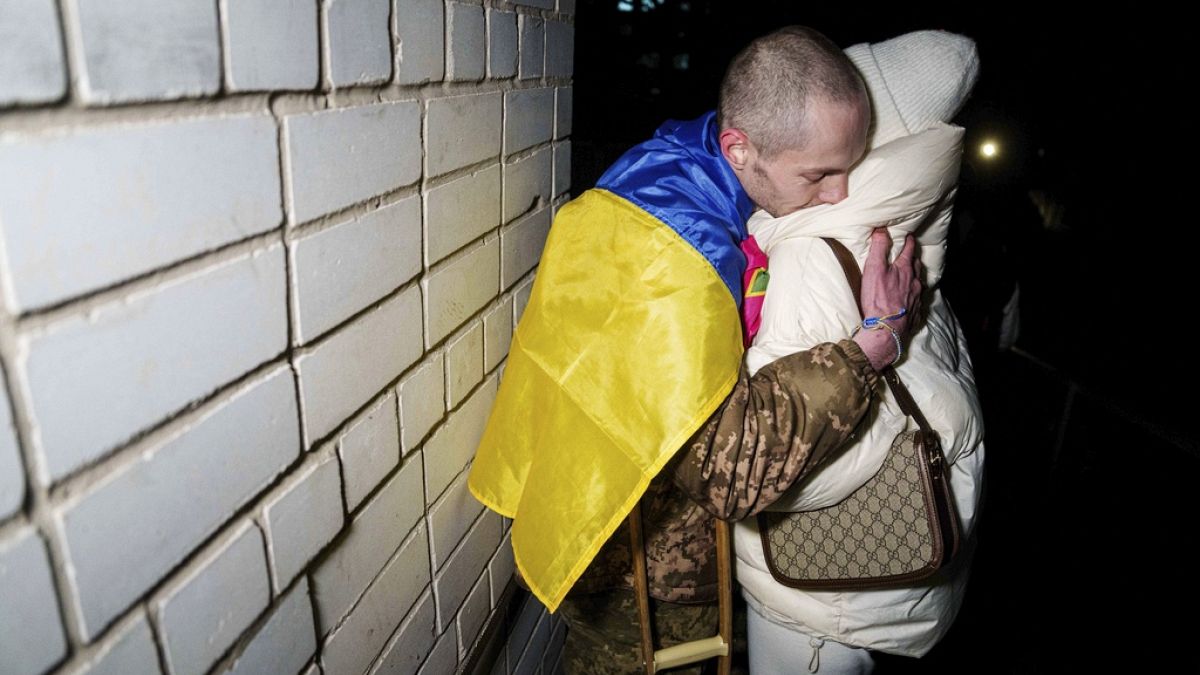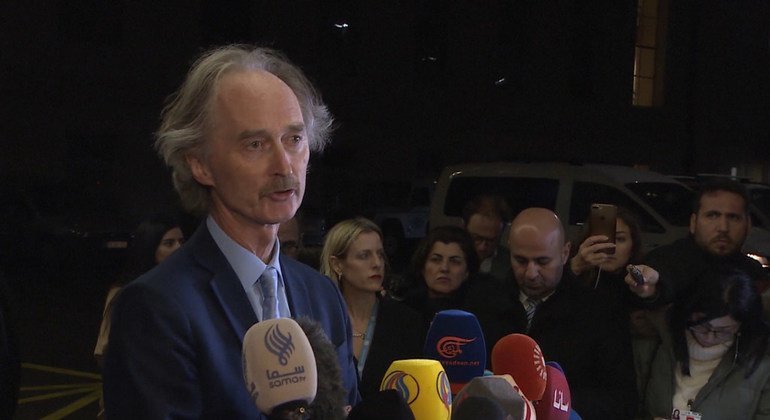Here are some of the Ukraine and Russia stories we covered earlier on Wednesday:
And here are the latest developments about the war you need to know:
Kherson offensive: Ukraine claims successes, while Russia says operation has ‘failed’
Ukrainian forces have had “successes” in three areas of the Russian-occupied region of Kherson, a Ukrainian regional official said on Wednesday, two days after Kyiv announced the start of a southern counter-offensive to retake territory.
Yuriy Sobolevskyi, the deputy head of Kherson’s regional council, told Ukraine’s national news broadcaster that Ukrainian troops had enjoyed successes in the Kherson, Beryslav, and Kakhovka districts, but declined to give details.
“Now is the time to support our armed forces… Now is not the time to talk about the specific successes of our lads,” he said, echoing the Ukrainian military’s insistence on a near-total information blackout about the offensive.
Sobolevskyi urged Ukrainians to support their armed forces with “everything they could” as the offensive was using up a vast quantity of resources.
“Right now, drones and ammunition are being used there like expendable material,” he said.
Meanwhile Russia’s defence ministry said on Wednesday that Ukraine’s attempts to mount a counter-offensive in the south of the country had failed, with their forces suffering heavy losses in equipment and men.
In its daily briefing, Russia’s defence ministry said its forces had shot down three Ukrainian helicopters and that Ukraine had lost four fighter jets during two days of fighting around the Mykolaiv-Kriviy Rih frontline and in other areas of southern Ukraine.
German military chief warns against being complacent about Russian military
Germany’s chief of defence has warned that the West must not underestimate Moscow’s military strength, saying Russia has the scope to open up a second front should it choose to do so.
“The bulk of the Russian land forces may be tied down in Ukraine at the moment but, even so, we should not underestimate the Russian land forces’ potential to open a second theatre of war,” General Eberhard Zorn, the highest-ranking soldier of the Bundeswehr, told Reuters in an interview.
Beyond the army, Russia also has a navy and air force at its disposal, he added.
“Most of the Russian navy has not yet been deployed in the war on Ukraine, and the Russian air force still has significant potential as well, which poses a threat to NATO too,” Zorn said.
The Bundeswehr regularly supports NATO air policing missions over the Baltic states with fighter jets and, having one of the strongest fleets in the region, is also keeping a close eye on the developments in the Baltic Sea at its doorstep.
One potential hotspot there is Kaliningrad, a Russian exclave sandwiched between NATO members Poland and Lithuania, that hosts Russia’s Baltic naval fleet and is a deployment location for Russian nuclear-capable Iskander missiles.
Russia has threatened to station nuclear and hypersonic weapons in Kaliningrad should Finland and Sweden join NATO as they are in the process of doing.
Zorn, speaking before the start of an Ukrainian offensive in the south, stressed that Russia continued to have substantial reserves.
“As concerns its military, Russia is very well capable of expanding the conflict regionally,” the general said. “That this would be a very unreasonable thing for Russia to do is a different story.”
Referring to the military situation in Ukraine, Zorn said the dynamic of Russia’s attack had slowed down but Russia was still pressing steadily ahead.
UN nuclear inspectors arrive in Zaporizhzhia city
A team of inspectors from the United Nations’ International Atomic Energy Agency made its way toward Ukraine’s Zaporizhzhia nuclear power plant on Wednesday on a perilous, long-sought mission to safeguard the site and prevent a catastrophe from the fighting raging around it.
Underscoring the danger, Kyiv and Moscow again accused each other of shelling the area around the complex overnight. Zaporizhzhia is the biggest nuclear plant in Europe.
Fighting in early March caused a brief fire at its training complex, and in recent days, the plant was temporarily knocked offline because of damage, heightening fears of a radiation leak or a reactor meltdown. Officials have begun distributing anti-radiation iodine tablets to nearby residents.
The complex has been occupied by Russian forces but run by Ukrainian engineers since the early days of the 6-month-old war. Ukraine alleges Russia is using the plant as a shield, storing weapons there and launching attacks from around it, while Moscow accuses Ukraine of recklessly firing on the place.
For months, as the fighting has played out, the head of the International Atomic Energy Agency has sought access to the plant for an unprecedented wartime mission, and world leaders have demanded that the U.N. watchdog be allowed to inspect it.
With the convoy of vans and UN-marked SUVs finally arriving in the afternoon in Zaporizhzhia city, still some 120 kilometers (70 miles) by road from the plant, IAEA chief and mission leader Rafael Grossi said the “real work” will start on Thursday. He underscored the challenges ahead.
“It’s a mission that seeks to prevent a nuclear accident and to preserve this important – the largest, the biggest – nuclear power plant in Europe,” he said.
He said an initial tour will take a few days, after which “we will have a pretty good idea of what’s going on.” Grossi said he had received “explicit guarantees” from Russia that the 14 experts would be able to do their work.
Grossi said he is hoping the IAEA will be able to establish a “continued presence” at the plant to safeguard it against an accident.
President Zelenskyy makes surprises Cannes Film Festival appearance
Ukrainian President Volodymyyr Zelenskyy made a surprise appearance at the opening of the Cannes Film Festival in France on Wednesday.
Appearing via video link, Zelenskyy called on the film world to “not forget” the war that “has not lasted 120 minutes, but has lasted 189 days.”
At the end of Zelenskyy’s speech, the haunting list of first names of all the children and young people killed so far in the conflict, together with their date and place of birth, were displayed against a black background.




















Discussion about this post